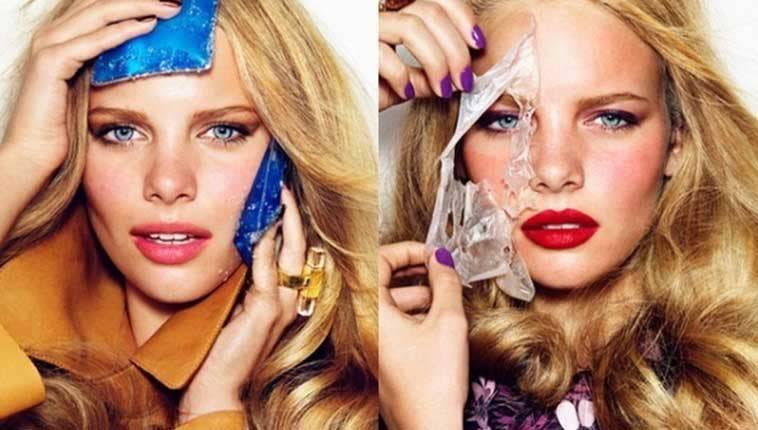Best Post-Procedure Skin Care Practices

Image: Fashion Photographer Nicolas Moore
You’ve just had a Vi Peel, and the world is looking up—there’s a spring in your well-heeled step, and you can just feel your skin getting glowier by the minute. OK, that’s a bit hyperbolic, but there is some truth to it. Watching your skin transform for the better, especially when results are immediate, is one of the most satisfying parts of getting a cosmetic treatment. However, just because your service is a fait accompli doesn’t mean all the work is done. To maximize results, follow these post-procedure skincare practices from CB Verified expert dermatologist Julie Russak, MD, a professor of dermatology at Mount Sinai Hospital and founder of Russak Dermatology Clinic in New York City.
Get Religious About Sun Protection (Even In The Winter)
“The purpose of laser resurfacing or a chemical peel is to treat the upper and sometimes deeper layers of the skin. It takes 6 to 8 weeks for this interrupted layer to regenerate fresh, rejuvenated skin. During this time, the skin is more easily prone to sun damage and burns, easily resulting in blotchy hyperpigmentation. Without proper sun protection, you could create more damage than what you were initially trying to correct,” says Dr. Russak. Limit your exposure to the sun as much as possible, and when outdoors, protect your skin with SPF 30 or higher and wear a wide-brimmed hat. Check out our round-up of Best Sunscreens For Every Your Every Need.
Add Arnica to Your Skincare Arsenal
While everyone buzzes about the skincare devices and technologies, homeopathic remedies also have their place in the treatment room. “Before and after any procedure that has a tendency to cause bruising, like filler, we recommend taking oral Arnica, an herbal supplement that helps prevent bruising and decreases inflammation, allowing the skin to heal faster with fewer side effects,” suggests Dr. Russak says. Your practitioner will either provide Arnica for you or you can visit any pharmacy or shop online or in a pharmacy for the supplement.
Ease Back Into Your Usual Skincare Regimen
Just as products that can increase skin sensitivity should be avoided in your pre-treatment skincare regimen, these same products need to be gradually reintroduced following. “I advise clients to stay away from Retinoids and HA (hydroxy acids) for 3-14 days after having a chemical peels. The length of time really depends on a client’s skin, the kind of peel they had, and its strength.” As a general rule, wait four days following a gentler treatment and up to a week or more for intensive procedures. Be sure to talk to your aesthetician or doctor about the products you use to figure out when and how to reincorporate the harsher ones back into your daily regimen.
Soothe Sensitized Skin
Due to heightened sensitivity following a treatment, certain products and ingredients can help calm and nurture your skin back to peak condition. Two products that Dr. Russak suggests: SkinCeuticals Epidermal Repair, $69, restores skin’s protective barrier soothing inflamed skin and reduces redness, and SkinCeuticals Phyto Corrective Gel, $62, an antiseptic, oil-free serum that uses botanical extracts to calm post-procedural skin, diminish discoloration, and facilitate the healing process. Armed with these tools of the trade, you can expect the best results possible from your special treatment.
MORE FROM CHARLOTTESBOOK.COM:
Money Rules: Tipping Etiquette At Spas, Your Doctor’s Office, And Medi-Spas
Video: How Radio Frequency Tightens Your Skin

